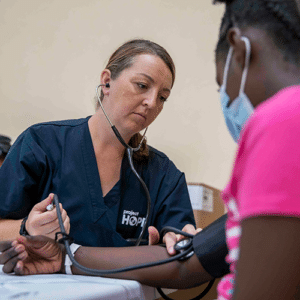
The Bahamas
About the Bahamas

The Bahamas, officially the Commonwealth of the Bahamas, gained its independence from the United Kingdom in 1973. Located 50 miles off the coast of Florida, the archipelago is made up of more than 700 islands spanning 10,000 square miles of ocean. Only about 30 of these islands are inhabited, home to a total population of some 400,000 people.
Life in the tropics doesn’t come without struggle, particularly when it comes to poverty. An estimated 12.5% of the population lives below the poverty line, and 9.5% of the population is out of work. Haitians are the largest minority group in the Bahamas, making up as much as one-fifth of the total population. As of 2015, 2 out of 5 Haitians living in the Bahamas were living in poverty.
High rates of unemployment and poverty are largely the result of a lack of economic diversity. Tourism constitutes about 50% of GDP and employs half the country’s workforce, leaving Bahamians extremely vulnerable to disaster and the threats of climate change. The islands have already felt the effects of intense and unpredictable weather patterns, and natural disasters have become a constant threat to citizens’ well-being and the country’s already poor infrastructure.
That threat came into full view on September 1, 2019, when Hurricane Dorian struck the Bahamas as a massive Category 5 storm — one of the strongest Atlantic hurricanes ever recorded and the strongest to ever hit the Bahamas. Dorian’s sustained winds reached 185 miles per hour and caused widespread damage across Abaco and Grand Bahama Island.
The unprecedented scale of the disaster affected more than 76,000 people, destroyed more than 13,000 houses, and brought tourism — the mainstay of the economy — to a crippling halt. With parts of the hardest-hit islands suffering total devastation, it will take years for many communities to fully rebuild and recover from the storm, and for tourists to return.


The Challenges
Securing basic necessities
Shortly after the storm, many people evacuated from Abaco to New Providence Island, either to stay in shelters or with friends and family in Nassau, the capital and country’s largest city.
For those left on Abaco, however, the need was immense. Many stayed behind to receive medical treatment and immediate needs included food, clean water, medicines, and hygiene and sanitation supplies. There were widespread gas and electricity shortages, and there was no way to buy food or water. Families fought for survival against a backdrop of complete rubble and unrecognizable terrain. It’s estimated that 80% of buildings on the island were either damaged or destroyed. The death toll was still being tabulated two months after the storm, as piles of debris continued to be cleared.
Read “Families Have Lost Everything: Complete Devastation on Abaco Island”
Read “For Dorian’s Survivors, the Devastation Continues”
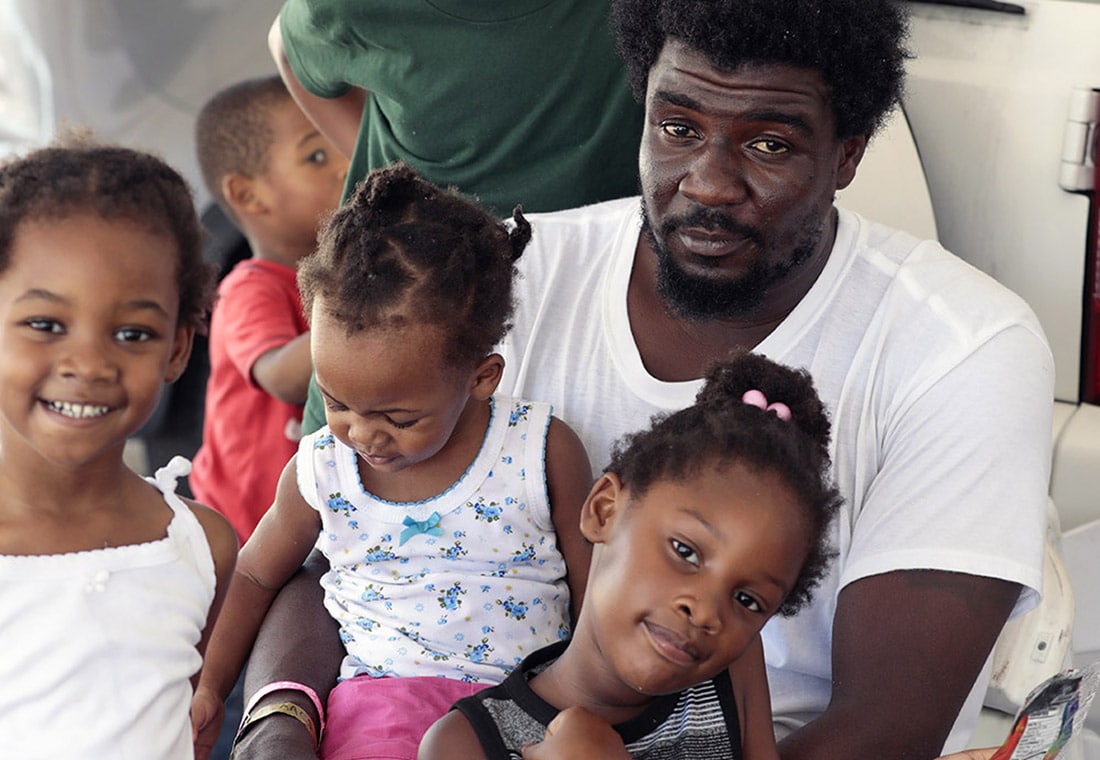
Meeting immediate health needs
After Dorian, hospitals and clinics faced critical shortages of medicines and supplies, including insulin needles and phenobarbital, a drug to treat seizures. There was — and still is — a lack of health workers available to treat chronic and acute health needs. The top health concerns our team observed included diabetes, hypertension, acute respiratory infections, gastrointestinal illness, and skin diseases like scabies. Concerns about water quality, meanwhile, threatened the possibility of additional water-borne illnesses or even disease outbreak.
With so many people evacuating to Nassau, health screenings for evacuee children became necessary in order for them to resume schooling. The Ministry of Education and Department of Social Services estimated as many as 2,500 students needed screenings, and as the school year began just days after the storm, it became urgent to get children screened so they wouldn’t fall too far behind.
As is often the case after disaster, physical health is only one part of the equation. The emotional toll of the storm was equally devastating — and ongoing psychosocial support will be crucial in helping survivors heal from the immeasurable loss and trauma of the storm.
Read “’Breathtaking’ Destruction: A Q&A On Hurricane Dorian’s Aftermath”
Read “For Hurricane Dorian’s Survivors, Not All Wounds Are Physical“
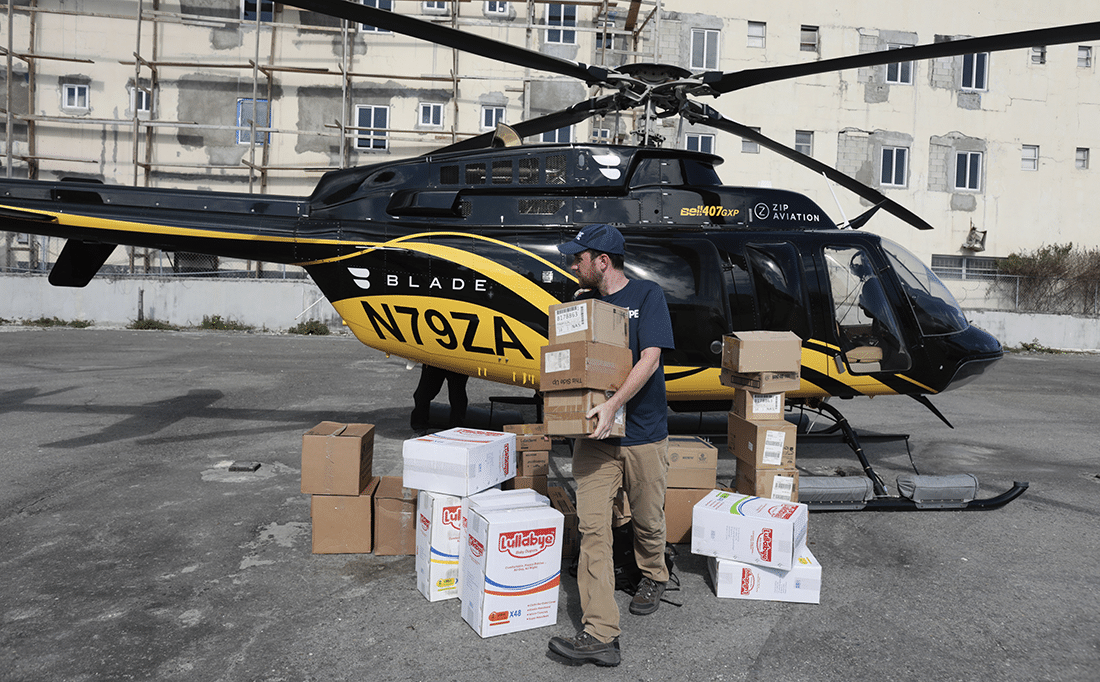
Restoring and rebuilding
As time goes on, the focus has shifted from immediate response and assistance to the recovery and rebuilding of the northern Bahamas.
Activities to restore power, repair infrastructure and reopen health facilities on Abaco are underway — but it won’t all happen overnight. The recovery phase is expected to be long as much of the island remains uninhabitable, and virtually all health facilities are in need of repair and restoration.

Bringing HOPE to the Bahamas
Our history in the Bahamas
Project HOPE was one of the first organizations to respond to Hurricane Dorian, arriving in the Bahamas three days after landfall to deliver urgently needed medical relief and health supplies. Today, HOPE continues to work with partners to provide humanitarian assistance and health care in the Bahamas, focused primarily in Nassau, while coordinating with the Ministry of Health to support the islands’ long-term recovery.
Providing medical relief to survivors and evacuees
In the days and weeks following the storm, HOPE deployed 28 expert medical volunteers to provide direct patient care, including physicians, nurses, nurse practitioners and pharmacists.
As more than 2,000 evacuees arrived in Nassau from Abaco and Grand Bahama Island, HOPE worked inside shelters to help meet their immediate health needs. In coordination with the Ministry of Health and the Department of Social Services, our team provided primary health services, referrals, medicines and medical supplies to over 1,500 patients at the shelter clinics. We also provided health screenings to more than 600 evacuee children who were forced to attend school in Nassau.
As response agencies began to leave the Bahamas, HOPE scaled up health activities to provide staffing support to the Marsh Harbour Community Clinic on Abaco, at the request of the Ministry of Health. Our team of medical practitioners helped address immediate health worker shortages while the clinic began to resume its normal operations.
Read “In the Wake of Hurricane Dorian, A Newborn Lives in Limbo”
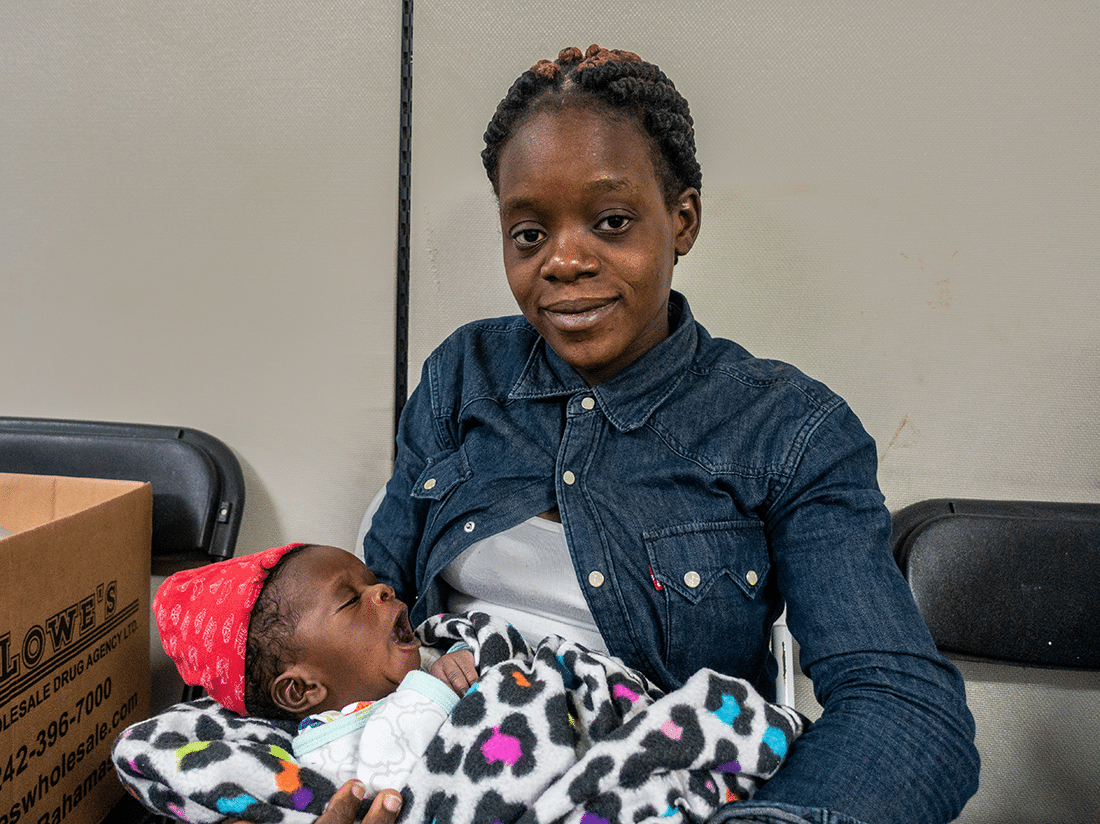
Delivering essential medicines and supplies
In the first few days after the storm, we worked quickly to gain access to affected areas and organize shipments of medicines and supplies to reach the most vulnerable survivors.
One week after Dorian devastated Abaco, HOPE delivered the first distribution of medical supplies to Marsh Harbour Community Clinic via helicopter. The delivery included trauma supplies, gauze, bandages, diapers and cleaning supplies. HOPE continued to distribute medical supplies for communities facing monumental recovery — from disaster kits to protect basic hygiene and sanitation, to glucometers so diabetes patients can check their sugar levels.
In total, HOPE delivered $3.1 million in medicines and supplies, including more than 16,500 hygiene kits and 3 metric tons of Interagency Emergency Health Kits to the Bahamas’ Ministry of Health.
Supporting long-term recovery and resilience building
One month after the storm hit, HOPE began delivering first-aid training and distributing first-aid kits in all seven shelters on New Providence Island. Trainings were conducted in partnership with EPECARE, a U.S.-based nonprofit that uses Creole-speaking trainers in order to reach the island’s Haitian population. We soon expanded the program to serve communities on Abaco, reaching Haitian communities, government workers, community-based organizations, local NGOs and community leaders with the training.
As the Bahamas continues its recovery, we’re working to provide WASH programming and repair facilities in coordination with local authorities and partners.
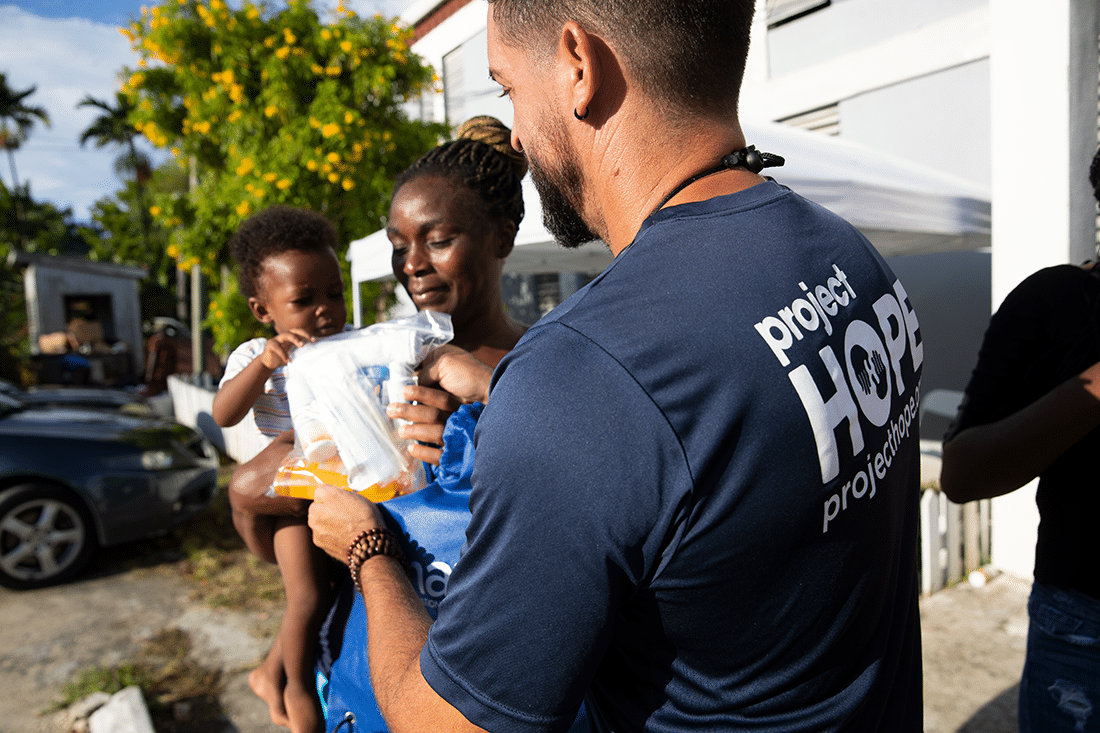

Our Impact
Since Hurricane Dorian, Project HOPE has provided direct care to more than 1,500 hurricane survivors through shelter clinics, school health screenings and the Marsh Harbour Community Clinic. We’ve also distributed more than $3.1 million in lifesaving medicines and supplies.
In total, HOPE delivered more than 16,500 hygiene kits donated by MAP International and the Church of Latter-day Saints to various shelters, as well as 3 metric tons of Interagency Emergency Health Kits — enough to support a population of 30,000 for three months.